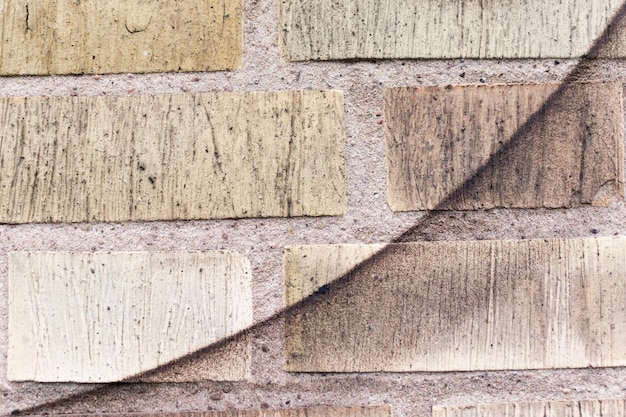The Future of Sustainable Housing: Innovations for 2025

The Future of Sustainable Housing: Innovations to Watch in 2025 encompasses a wave of eco-friendly technologies and design philosophies, aiming to minimize environmental impact and maximize resource efficiency in residential buildings, offering a glimpse into a more responsible and resilient built environment.
The urgency for sustainable living is reshaping the housing industry, and The Future of Sustainable Housing: Innovations to Watch in 2025 promises groundbreaking changes. Discover what innovative solutions will lead the way.
Embracing Eco-Conscious Construction Methods
Sustainable housing begins with the very materials and methods used in construction. In 2025, we’ll see a greater emphasis on eco-conscious choices that minimize environmental impact.
Modular and Prefabricated Homes
Modular and prefabricated homes are gaining popularity due to their efficiency and reduced waste. These homes are built in factories and assembled on-site, cutting down on construction time and material waste.
Eco-Friendly Building Materials
Traditional building materials like concrete and steel have a significant carbon footprint. In 2025, expect to see a greater adoption of eco-friendly alternatives such as:
- Bamboo: A rapidly renewable resource that’s strong and versatile.
- Reclaimed Wood: Giving new life to old wood, reducing deforestation.
- Hempcrete: A mixture of hemp, lime, and water that’s fire-resistant and has excellent insulation properties.
- Recycled Plastic: Transforming plastic waste into durable building blocks.
Eco-conscious construction methods not only reduce environmental impact but also often result in healthier and more energy-efficient homes.

Energy Efficiency and Renewable Energy Integration
One of the cornerstones of sustainable housing is energy efficiency. The innovations of 2025 are geared towards reducing energy consumption and incorporating renewable energy sources directly into homes.
Smart Home Energy Management Systems
These systems use sensors, data analytics, and automation to optimize energy usage. They can automatically adjust heating, cooling, and lighting based on occupancy and real-time energy prices.
Solar Power Advancements
Solar panels are becoming more efficient and affordable. Innovations in 2025 include:
- Perovskite Solar Cells: These cells are more efficient and can be printed onto flexible materials.
- Integrated Solar Roofing: Solar panels that are seamlessly integrated into the roof design, making them more aesthetically pleasing.
- Solar Glass: Windows that generate electricity while allowing natural light to pass through.
By integrating renewable energy sources and smart management systems, homes can significantly reduce their reliance on fossil fuels and lower energy bills.
Water Conservation Strategies
Water scarcity is a growing concern, making water conservation a crucial aspect of sustainable housing. Innovative technologies and design features are helping homeowners reduce their water footprint.
Rainwater Harvesting Systems
These systems collect rainwater from roofs and store it for later use. The harvested water can be used for irrigation, flushing toilets, and even washing clothes, reducing the demand on municipal water supplies.
Greywater Recycling Systems
Greywater is wastewater from showers, sinks, and washing machines. Recycling systems treat this water and reuse it for non-potable purposes like irrigation and toilet flushing.
Water-Efficient Fixtures and Appliances
Innovations in plumbing fixtures and appliances are helping homeowners conserve water without sacrificing performance. These include:
- Low-Flow Toilets: Toilets that use significantly less water per flush.
- WaterSense Certified Showerheads and Faucets: Fixtures that meet EPA standards for water efficiency.
- Smart Irrigation Systems: Systems that use weather data and soil moisture sensors to optimize watering schedules.
Water conservation strategies not only reduce water bills but also help protect this precious resource for future generations.

Green Roofs and Vertical Gardens
Integrating nature into the built environment is a key aspect of sustainable housing. Green roofs and vertical gardens offer numerous benefits, from improved air quality to reduced energy consumption.
Benefits of Green Roofs
Green roofs are vegetated rooftops that provide insulation, reduce stormwater runoff, and improve air quality. They also help mitigate the urban heat island effect, keeping cities cooler.
Vertical Gardens for Urban Spaces
Vertical gardens are walls covered in plants, creating a green oasis in urban environments. They improve air quality, provide habitat for pollinators, and enhance the aesthetic appeal of buildings.
Choosing the Right Plants
Selecting the right plants is crucial for the success of green roofs and vertical gardens. Native plants are well-suited to the local climate and require less maintenance.
- Sedums: Drought-tolerant plants ideal for green roofs.
- Climbing Vines: Plants that can be trained to grow up walls, creating a vertical garden effect.
- Herbs and Vegetables: Edible plants that can be grown in vertical gardens, providing fresh produce for homeowners.
Green roofs and vertical gardens transform buildings into living ecosystems, enhancing the well-being of both people and the planet.
Smart and Sustainable Materials Management
The homes of 2025 will likely use far more recycled materials, as well as smarter systems for managing resources.
Waste Reduction Strategies
Reducing waste during construction and demolition is essential for sustainable housing. Smart home technology can monitor resource consumption in real-time and provide feedback to homeowners, encouraging them to conserve water, energy, and materials.
Recycling and Repurposing
Innovative recycling technologies will enable the creation of high-quality building materials from waste streams. Moreover, designs that allow for disassembly of components at the end of their life will become commonplace.
Using Smart Tech
More advanced tech such as the below will be employed:
- AI driven waste management.
- Real time energy monitoring.
- Smart resource allocation.
This way, houses can remain environmentally conscious during their construction and throughout their life.
Financing and Incentives for Sustainable Housing
The shift towards sustainable housing requires financial support and incentives to make it accessible to a wider range of homeowners.
Green Mortgages and Loans
Green mortgages and loans offer favorable terms for energy-efficient homes. These financial products encourage homeowners to invest in sustainable features and reduce their environmental impact.
Government Rebates and Tax Credits
Many governments offer rebates and tax credits for homeowners who install renewable energy systems or make energy-efficient upgrades. These incentives help offset the upfront costs of sustainable investments.
Community Based Initiatives
The below will provide avenues for funding sustainable housing:
- Crowdfunding.
- Volunteering schemes.
- Low cost loans and equipment.
Financial incentives and community-based programs make sustainable housing more affordable and accessible, driving its adoption across different income levels.
| Key Feature | Brief Description |
|---|---|
| 🌱 Green Building Materials | Eco-friendly alternatives like bamboo, reclaimed wood, and hempcrete reduce environmental impact. |
| ⚡ Renewable Energy Integration | Solar panels, smart grids, and energy-efficient appliances minimize reliance on fossil fuels. |
| 💧 Water Conservation | Rainwater harvesting, greywater recycling, and water-efficient fixtures cut down water usage. |
| 🌿 Green Roofs & Gardens | Vegetated rooftops and vertical gardens improve air quality and reduce the urban heat island effect. |
FAQ
▼
A sustainable house minimizes environmental impact by using eco-friendly materials, conserving energy and water, and promoting healthy living. This includes renewable energy sources and efficient resource management.
▼
Start by upgrading to energy-efficient appliances, installing low-flow fixtures, and improving insulation. Consider solar panels and rainwater harvesting to further reduce your environmental footprint.
▼
While initial costs may be higher, sustainable homes often have lower operating expenses due to reduced energy and water consumption. Government incentives and long-term savings can offset the initial investment.
▼
Green roofs provide insulation, reduce stormwater runoff, improve air quality, and help mitigate the urban heat island effect. They also create a habitat for pollinators and enhance the aesthetic appeal of buildings.
▼
Explore green mortgages, government rebates, and tax credits for energy-efficient upgrades. Community-based initiatives and crowdfunding can also provide financial support for sustainable housing projects.
Conclusion
The innovations in sustainable housing poised to make an impact by 2025 represent a shift towards more environmentally responsible and resource-efficient living. From eco-conscious construction methods to renewable energy integration and smart home systems, these advancements are paving the way for a future where homes are not only comfortable and functional but also contribute to the health of the planet.





